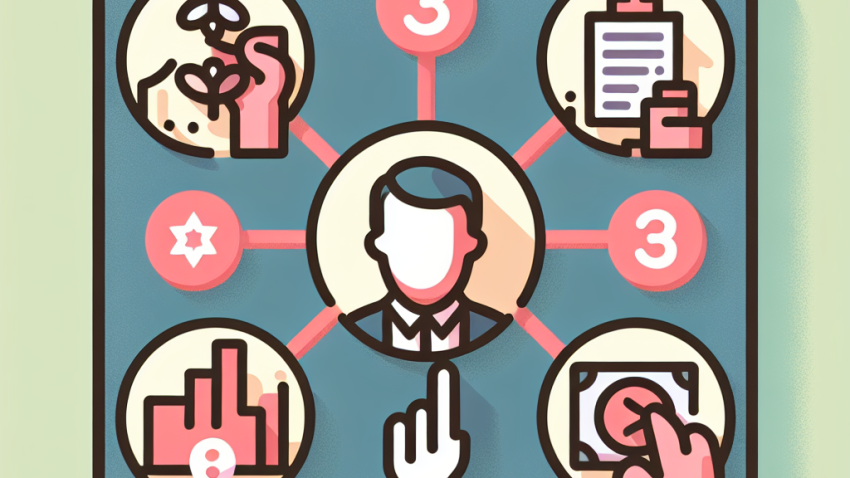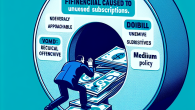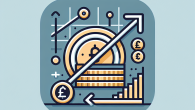
My Top 3 Finance YouTubers Who Don’t Make Me Fall Asleep
How to Create a Personal Budget (Without Losing Your Mind)
Let me guess—you’ve heard the word “budget” and instantly pictured spreadsheets, math, and giving up your daily coffee treat? Don’t worry, I’m Tom Bradley, and I’m here to tell you creating a budget doesn’t have to feel like doing taxes while blindfolded.
In fact, building a personal budget is one of the smartest, most powerful things you can do for your financial future. It’s not about restriction—it’s about clarity, control, and yes, even freedom. And let’s be real. If you can binge-watch a whole season of your favorite series in a weekend, you can absolutely do this.
What Is a Personal Budget?
At its core, a personal budget is a plan for your money. It’s a roadmap that shows how much you earn, how much you spend, and where every dollar is going. Think of it like GPS for your bank account—without one, you’re just aimlessly driving and hoping you end up somewhere decent.
A budget helps you:
- Get out of debt
- Save for goals (vacations, cars, that bougie air fryer)
- Stop living paycheck to paycheck
- Sleep better at night, knowing your bills are paid
Step 1: Know Your Income (Your Actual Income)
We’re kicking it off with the fun part—money in. And no, you can’t count that “possible” birthday gift from Grandma.
Tally up your monthly take-home pay. That means after taxes, insurance, and any other deductions. If you have multiple income streams—side hustles, freelance gigs, karaoke prize winnings—add them in too. But only include what’s reliable and consistent.
Example:
- Day job: $3,200 after tax
- Freelance writing: $800
- Total income: $4,000
Step 2: Track Your Expenses (Yes, Every Single One)
This is where most people groan—but remember, you can’t fix what you don’t know. Go through your bank statements from the last 1-2 months and list everything you spend money on.
Break it into two categories:
Fixed Expenses
These stay the same each month, like:
- Rent or mortgage
- Car payments
- Internet and phone
- Insurance
Variable Expenses
These change month to month:
- Groceries
- Dining out
- Gas
- Streaming services
- Random late-night online shopping “emergencies”
Don’t forget your irregular expenses like annual subscriptions or quarterly bills. Average them out over 12 months to get a monthly cost.
Step 3: Categorize and Assign Spending Limits
Now for the structure. Based on your past spending, come up with reasonable limits for each category. Be honest…but not cruel. Sure, you can cut back on ordering takeout, but unless your soul thrives on suffering, don’t eliminate it entirely.
A sample budget might look like this:
- Rent: $1,200
- Utilities: $200
- Groceries: $400
- Transportation: $300
- Dining/Entertainment: $250
- Savings: $400
- Debt payments: $250
- Miscellaneous: $100
Step 4: Choose a Budgeting Method
Here’s where things get spicy—well, as spicy as organizing numbers can get. There are a few different methods you can use depending on your style and goals.
The 50/30/20 Rule
This is a favorite of beginners (and lazy geniuses):
- 50% to Needs (housing, utilities, food)
- 30% to Wants (entertainment, travel, avocado toast)
- 20% to Savings and Debt Repayment
Zero-Based Budgeting
Every dollar gets a job. Income minus expenses equals zero. You assign every cent to a category—even if it’s just “fun money.” Great for people who like control and aren’t afraid of spreadsheets.
Envelope System
It’s old-school, but it works. Withdraw cash and place it into labeled envelopes for each category. Once an envelope’s empty, you stop spending. Digital versions of this exist too, so yes, you can do it without carrying wads of cash like a mob boss.
Step 5: Adjust, Review, Repeat
Your first budget won’t be perfect—and that’s okay. Life changes. You might overspend in one category and underspend in another. The goal is progress, not perfection.
Revisit your budget every month and adjust based on what actually happened. Use apps or simple spreadsheets to track as you go. The more you review and adapt, the better you’ll get.
Why Most Budgets Fail (And How to Prevent It)
Here’s a secret: Budgets don’t typically fail because of math mistakes. They fail because we approach them with the wrong mindset.
Common mistakes:
- Being too strict – A budget without flexibility is a budget doomed to die.
- Forgetting irregular expenses – Your car registration isn’t a surprise…unless you’re a goldfish.
- Not tracking spending – If you don’t check in, you’ll veer off course. Quickly.
Instead, build some “wiggle room” categories. Be honest about your habits. Allow for imperfect months. A good budget is realistic, evolving, and reflects who you actually are—not who you wish you were.
Tools to Make Budgeting Easier
There’s no shame in getting help. Budgeting doesn’t mean you have to go full calculator wizard (though if you want to, power to you).
Here are a few tools I recommend:
- Apps: YNAB (You Need A Budget), Mint, EveryDollar
- Spreadsheets: Build your own or download templates via Google Sheets
- Binder + Pen: No tech? No problem. Old-school still works wonders.
Final Thoughts: You’ve Got This
Listen, I get it—money can be intimidating. But budgeting isn’t about giving up everything you love. It’s about choosing where your money goes instead of wondering where the heck it went.
You’re not bad with money. You just haven’t been shown how to make it work for you… until now. Start simple, be consistent, and most importantly—give yourself grace. Rome wasn’t built in a day, and neither is a budget that feels second nature.
So take a deep breath, grab your coffee (yes, you can keep it), and take that first step. You’re building a future where your money serves you, not the other way around.
Need help or want to talk to someone? Reach out on our contact page. And if you’re new here, learn more about us.









Leave a Reply